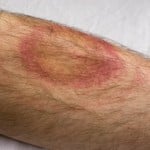The U.S. Chemical Safety Board (CSB) recently approved recommendations to the Occupational Safety and Health Administration (OSHA), the National Fire Protection Association (NFPA) and other organizations to help prevent explosions and fires during pipe cleaning and purging operations. As recently as February 7, 2010 at the Kleen Energy power plant in Middletown, CT, an explosion caused six fatalities and numerous injuries during the cleaning of a natural gas pipe system. Another similar explosion occurred at the ConAgra Foods Slim Jim plant in Garner, NC on June 9, 2009 and caused the death of four workers. In both instances, an operation termed natural gas blow was utilized to force natural gas under pressure through a piping system during construction and prior to startup of the plants turbines to rid the pipe system of non-natural gas impurities and debris. The gas was vented to the ambient atmosphere at open pipe ends less than 20 feet from the ground, and in worker areas where the gas easily found a source of ignition. It seems that common sense would lead one to never vent natural gas near sources of ignition.
- At Kleen Energy the potential ignition sources included electrical power to the building, welders actively working and diesel-fueled heaters running in the vicinity.
- Approximately TWO MILLION cubic feet of natural gas were released at Kleen Energy on February 7, 2010 during the natural gas blow, enough natural gas, according to the CSB, to provide heating and cooking fuel to the average American home every day for more than 25 years.
The CSB determined that no specific federal workplace safety standard exists that would prohibit the intentional release of natural gas into the workplace. Yes, I was shocked when I read that, too! Eighteen urgent recommendations were provided and voted on by the CSB to prevent future disasters. Some of the recommendations include Prohibiting the use of natural gas for pipe cleaning and using alternatives such as compressed air, steam and other chemical substitutes, and upgrading the current gas safety standards for general industry and construction that are considered by the CSB to contain significant gaps that threaten the safety of workers at such facilities.
In February 2010, the CSB issued a safety bulletin titled Seven Key Lessons to Prevent Worker Deaths During Hot Work In and Around Tanks. This bulletin highlights another gap in the OSHA standards, While the OSHA standard prohibits hot work in an explosive atmosphere, it does not explicitly require the use of a combustible gas detector.
It is an unfortunate fact that such regulatory gaps can be found in many industries. We are reminded of these gaps while reading of disasters such as these, or more currently, watching the daily updates of oil washing ashore in the Gulf of Mexico. It is certainly welcome news that these CSB draft recommendations were quickly approved without amendments to help prevent future explosions during pipe cleaning operations.
Do you know of other examples of what would seem to be common sense safety measures that are not utilized because this is the way we have always done it wins over common sense?









